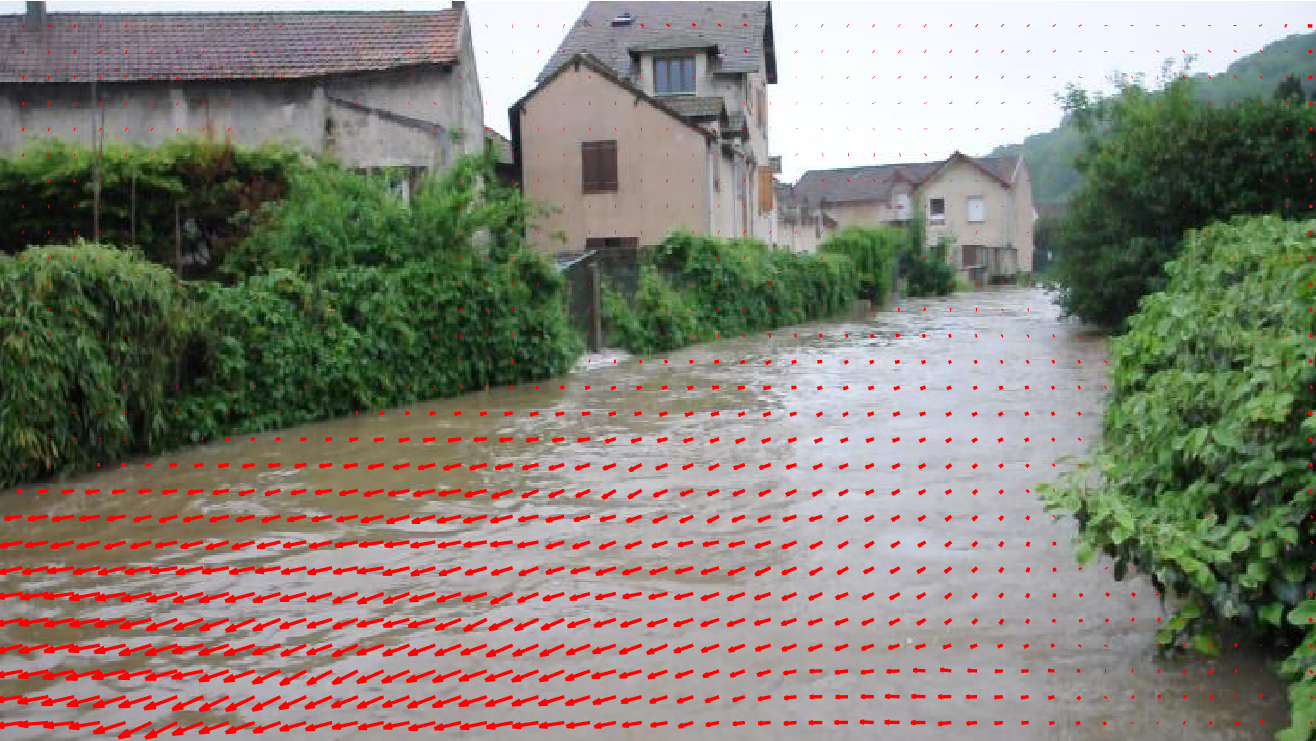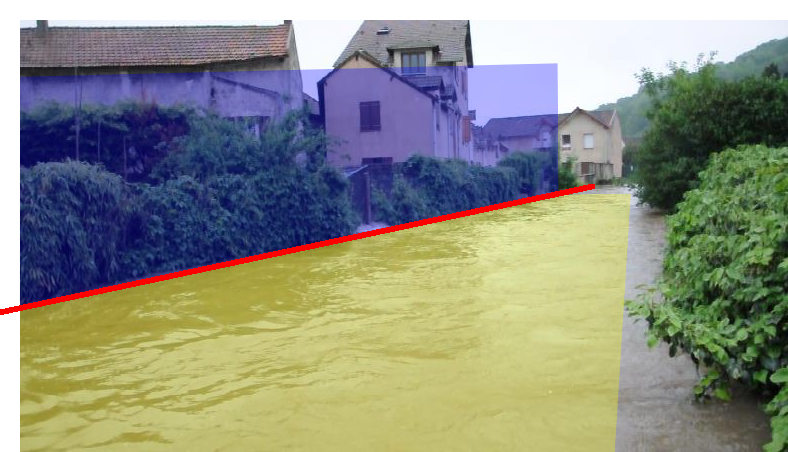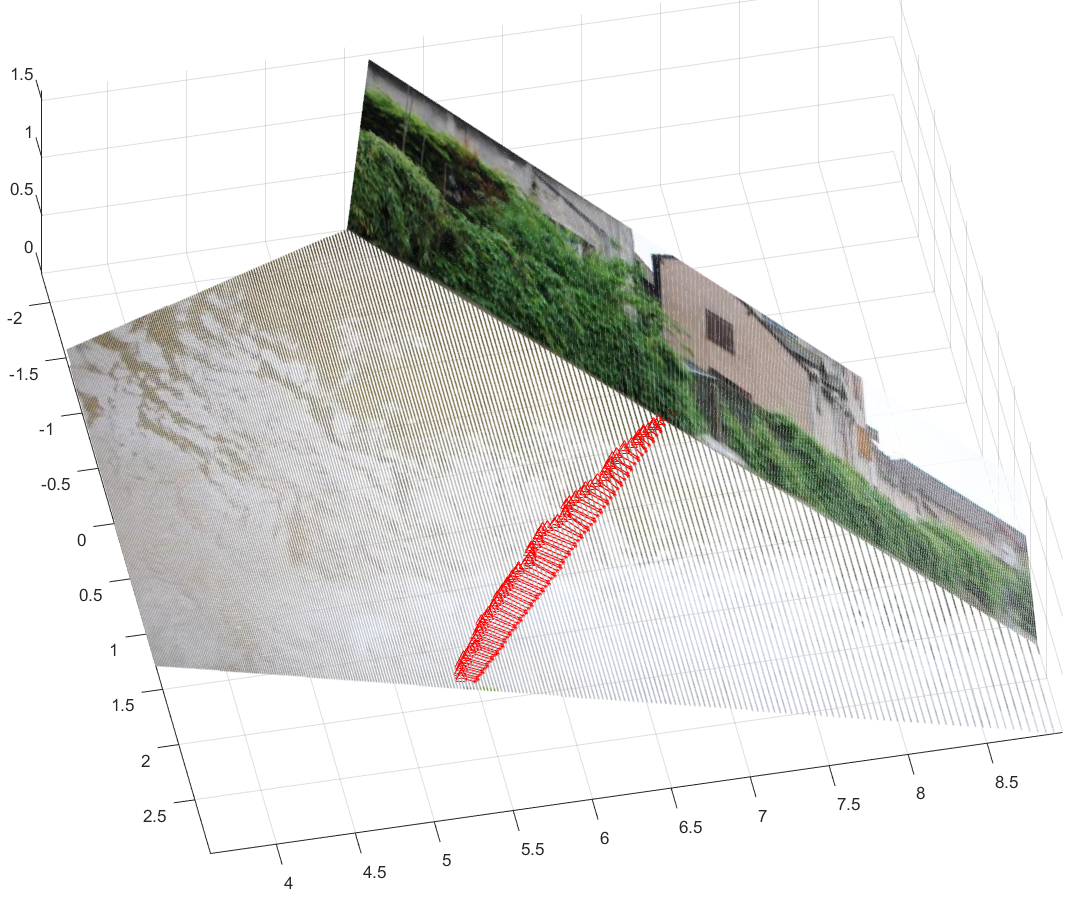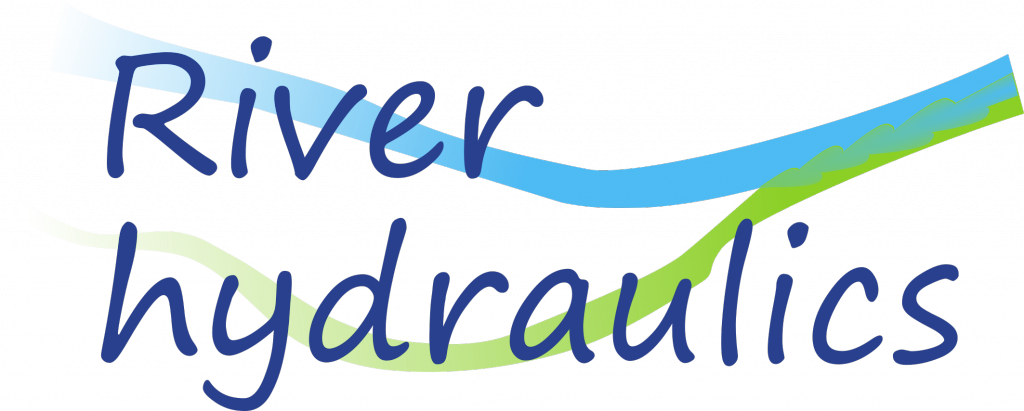 |
Musaab KHALID (2014-2018) |
| Analysis of water flow videos for surface velocity estimation | |
| Supervisors : L. Pénard (RiverLy, River Hydraulics team) & J.B. Faure (RiverLy River Hydraulics team) & É. Mémin (INRIA) | |
| University : MathSTIC Rennes 1 |
This thesis is an application of computer vision findings to river velocimetry research. Hydraulic research scientists already use various image processing techniques to process image sequences of rivers. The ultimate goal is to estimate free surface velocity of rivers remotely. As such, many risks related to intrusive river gauging techniques could be avoided. Towards this goal, there are two major issues that need to be addressed. Firstly, the motion of the river in image space needs to be estimated. The second issue is related to how to transform this image velocity to real world velocity. Until recently, image-based velocimetry methods impose many requirements on images and still need considerable amount of field work to be able to estimate rivers velocity with good accuracy. We extend the perimeter of this field by including amateur videos of rivers and we provide better solutions for the aforementioned issues.
We propose a motion estimation model that is based on the so-called optical flow, which is a well-developed method for rigid estimation in image sequences. Contrary to conventional techniques used before, optical flow formulation is flexible enough to incorporate physics equations that govern rivers motion. Our optical flow is based on the scalar transport equation and is augmented with a weighted diffusion term to compensate for small scale (non-captured) contributions. A result example is shown in Fig. 1. (a). Additionally, since there is no ground truth data for such type of image sequences, we present a new evaluation method to assess the results. It is based on trajectory reconstruction of few Lagrangian particles of interest and a direct comparison against their manually-reconstructed trajectories. The new motion estimation techniques outperformed traditional methods in image space.
Finally, we propose a specialized geometric modelling of river sites that allows complete and accurate passage from 2D velocity to world velocity, under mild assumptions. This modelling considerably reduces the field work needed before to deploy Ground Reference Points. We proceed to show the results of the case studies in which world velocity is estimated from raw videos. An example is shown in Fig. 1.
 |
 |
 |
| (a) | (b) | (c) |
| Figure 1. (a) Surface velocity vector field in image space. (b) Simplified 3D reconstruction with 2 planes. (c) 3D surface velocity vector field | ||
Publications and communications:
PhD thesis
Musaab Khalid. (2018). Analysis of water flow videos for surface velocity estimation
Signal, Image, Vision, Université de Rennes 1.
International journal articles
Khalid, M., Pénard L. & Mémin E. (2019) Optical flow for image-based river velocity estimation. Flow Measurement and Instrumentation, 65, 110-121, https://doi.org/10.1016/j.flowmeasinst.2018.11.009.
Khalid, M., Pénard L. & Mémin E. Geometric Plane-To-Plane Projection Estimation for the Application of Image-Based River Velocimetry. Submitted to Water Resources Research
Conference proceedings (extended abstract)
Khalid, M., Pénard, L., Mémin, E. Application of optical flow for river velocimetry. IGARSS 2017 – 37th IEEE Geoscience and Remote Sensing Symposium, Jul 2017, Fort Worth, Texas,United States


